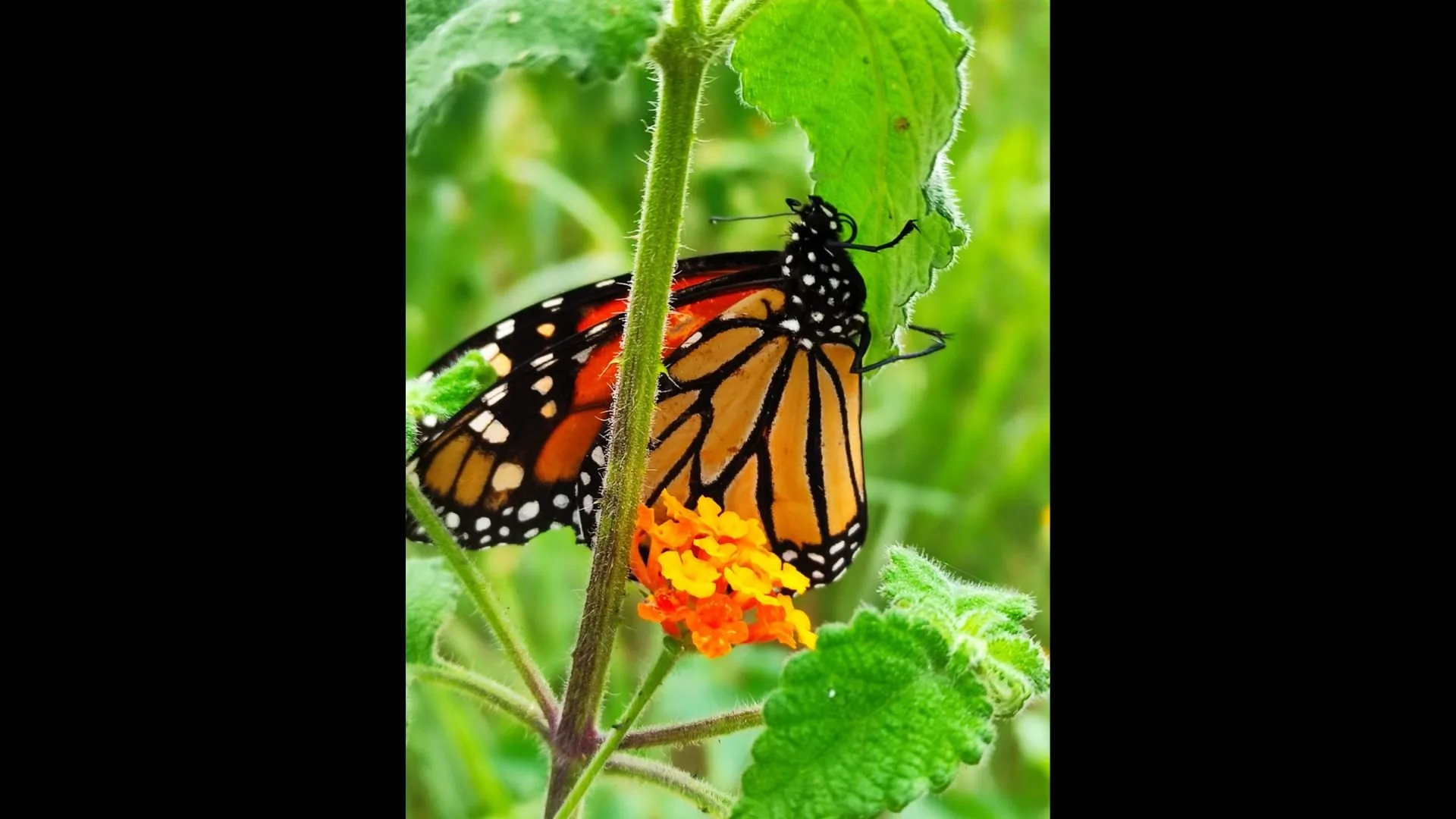Cancún, Quintana Roo — The Yucatán Peninsula has been confirmed as a new key point on the monarch butterfly's migration route. After six years of community monitoring, the species' reproductive presence is now notable in Isla Mujeres and other areas of southeastern Mexico, according to Juan Flores Valadez, a representative of the community initiative for bird conservation ICCA and a member of "Alas Mayas."
What began as a curiosity for local observers has become a finding of international relevance. It has been documented that the monarch butterfly (Danaus plexippus) not only passes through the Yucatán Peninsula during its migration but also actively reproduces in specific locations, such as Isla Mujeres, where all stages of its life cycle have been recorded: egg, larva, chrysalis, and adult.
This discovery, a result of the work by the group "Alas Mayas," places the Mexican Caribbean on the migratory map of one of the continent's most emblematic species. The evidence collected was recently incorporated into an international study led by Dr. Cristina Dockx (2023), which redefines the butterfly's traditional migratory route to include southeastern Mexico and the Caribbean as fundamental corridors in its annual movement.
"The issue of the monarch butterfly here in the Yucatán Peninsula is a novel topic that can aid knowledge, help people learn about it, allow them to observe them, to wait for them, and in the case of Isla Mujeres during the reproduction season, to know them, protect them, conserve them, and for people to get involved. It could even trigger a (sighting) season like that of the whale shark or the terns," Flores Valadez emphasized.
Community monitoring has allowed for the collection of data validated by researchers, demonstrating the power of citizen science when developed with rigor and persistence. Among the most notable records are the aggregation of more than 300 specimens in the community of San Juan del Río, Yucatán, and another group of around 100 butterflies in Cacao, Quintana Roo. These figures consolidate the hypothesis that this region serves as an active point of reproduction.
In recognition of this effort, the Community Monitoring Network for the Monarch Butterfly in the Yucatán Peninsula was formalized in October of this year. This alliance seeks to expand the work begun in 2019 and continue documenting the route the species follows from the United States, through Cuba, to southern Mexico.
This network will integrate information from observers, photographers, academics, and local communities in the states of Yucatán, Campeche, and Quintana Roo, as well as from strategic islands like Cozumel, Contoy, the Alacranes reef, and Isla Mujeres, where the butterfly has been most frequently observed.
Consequently, researchers and communities are calling on municipal, state, and federal authorities, as well as international organizations, to formally recognize the ecological relevance of the Yucatán Peninsula and integrate it into the trinational conservation strategies already operating between Mexico, the United States, and Canada.
The public is invited to participate by sharing their field observations to collectively build the migratory map of the monarch in the southern region of the country through the platform https://www.inaturalist.org/. The bioregistry began on October 1 and concludes on December 1.
"We want people to join in, to go out, observe, photograph, and share their findings. Science doesn't only happen in laboratories; it also happens on beaches, in gardens, and on rural roads," Flores Valadez invited.
Discover more from Riviera Maya News & Events
Subscribe to get the latest posts sent to your email.
